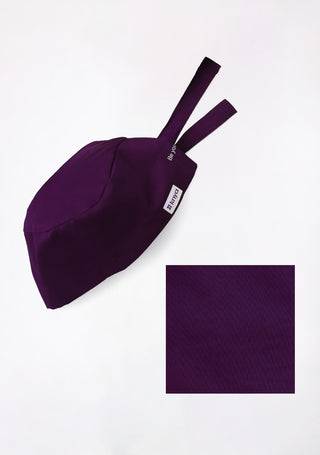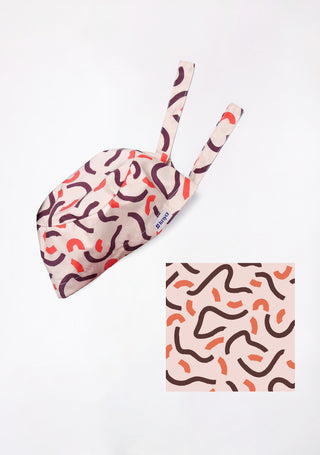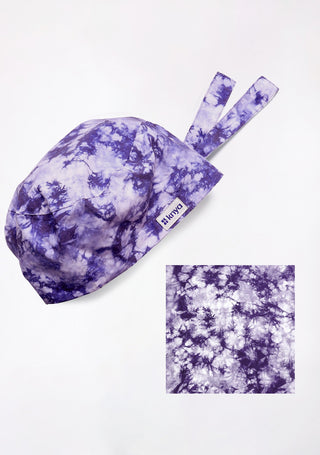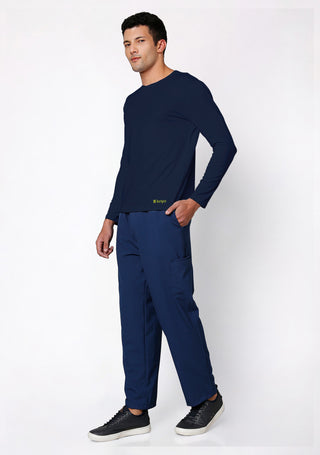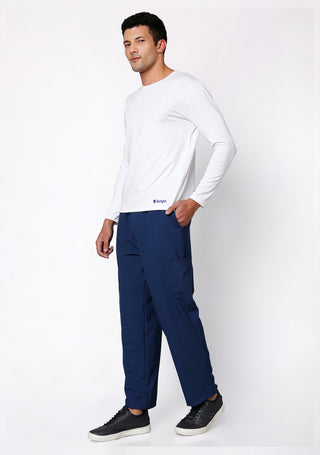Our lab coat is more than a garment; it's your partner in the work you do. Whether you're pipetting samples, seeing patients, or dissecting data, the material of your coat shapes your daily experience in ways you might not even notice until you pick the right one.
Cotton Lab Coats
Best for Researchers, students, or professionals in dry labs or low-risk environments who prioritize comfort and natural fibers.
Pros:
-
Breathability: Cotton is a natural fiber known for being soft, breathable, and skin-friendly, making it ideal for long wear—especially in warm environments.
-
Comfort: It’s gentle on sensitive skin, hypoallergenic, and comfortable during extended shifts.
-
Durability under heat: Cotton can handle high-temperature laundering, including sterilization processes like autoclaving.
-
Eco-Friendly: As a biodegradable natural fiber, cotton has less environmental impact than synthetic materials.
Cons:
-
Wrinkles easily: Cotton lab coats tend to wrinkle and require ironing to maintain a neat look.
-
Stain absorption: Cotton is absorbent and can hold onto stains more than synthetic materials.
-
Slower drying: It takes longer to dry after washing.
-
Not inherently fluid-resistant: In environments with biohazards or chemical exposure, pure cotton may not offer adequate protection unless specially treated.
For our male healthcare professionals, we offer a wide range of comfortable and stylish scrubs for men, designed to enhance both comfort and professional image
Polyester-Cotton Blends
Best for General healthcare professionals, lab staff, and students looking for a budget-friendly, low-maintenance option that balances form and function.
Pros:
-
Wrinkle resistance: Polyester brings structure and wrinkle-resistance to the soft feel of cotton.
-
Quick drying: Thanks to polyester, the coat dries faster and retains its shape better.
-
More stain resistant: Compared to pure cotton, the blended fabric is more resistant to staining.
-
Cost-effective: These are widely available and more affordable than some specialty fabrics.
Cons:
-
Less breathable: Polyester reduces the fabric’s breathability, which can make it uncomfortable in high temperatures.
-
May pill over time: Blended fibers are more prone to pilling after repeated washes.
-
Not ideal for high heat: Polyester can melt or shrink under intense heat, making it less suited for autoclaving unless specially treated.
100% Polyester Lab Coats
Best for Professionals in environments requiring fluid or chemical protection, or those prioritizing longevity and maintenance ease.
Pros:
-
Excellent fluid resistance: Polyester repels water and many chemicals, making it suitable for high-risk areas like ERs, pathology labs, or pharma manufacturing.
-
Long-lasting: Very durable and resistant to abrasion, polyester coats hold up well after repeated use.
-
Easy care: They resist wrinkles and stains, and they don’t shrink or deform easily.
Cons:
-
Low breathability: Polyester is not a breathable fabric, which can lead to discomfort during long or active shifts.
-
Static build-up: Polyester generates static electricity unless treated with anti-static finishes.
-
Less eco-friendly: Derived from petroleum, polyester is not biodegradable and contributes to microplastic pollution.
Treated Cotton Lab Coats (Flame or Fluid Resistant)
Best for: Chemists, engineers, and lab techs working around flammable materials or potential splashes.
Pros:
-
Enhanced protection: Treated with flame-retardant or fluid-repellent finishes, these coats offer superior safety in high-risk environments.
-
Natural comfort: Maintains the comfort and breathability of cotton while adding technical capabilities.
-
Industry-standard: Often required in settings like petrochemical labs or biotech facilities handling flammable substances.
Cons:
-
Cost: These specialized coats are more expensive than untreated ones.
-
Care requirements: Some coatings degrade over time or with repeated laundering; re-treatment may be necessary.
-
Potential stiffness: Some treatments can make the fabric feel stiff or heavy.
Microfiber & Performance Synthetics
Best for Physicians, dentists, and high-contact roles where appearance, mobility, and protection matter.
Pros:
-
High-tech features: These lab coats often come with antimicrobial, anti-static, stain-resistant, and fluid-resistant technologies.
-
Lightweight & stretchy: Performance synthetics may include spandex or other fibers for a more tailored, flexible fit.
-
Professional look: These coats maintain a crisp appearance throughout the day and resist odors and bacteria.
Cons:
-
Higher price point: Premium performance fabrics come with a matching price tag.
-
Environmental impact: Like other synthetics, microfiber can release microplastics during laundering unless filtered.
Sustainable & Recycled Lab Coats
Pros:
-
Eco-conscious: Made from recycled polyester, organic cotton, or bamboo fibers, these coats reduce carbon footprint and waste.
-
Modern aesthetics: Brands focusing on sustainable lab wear often prioritize sleek, minimalist designs.
-
Soft & breathable: Many natural-based sustainable fabrics are skin-friendly.
Cons:
-
Availability: Limited styles and sizes may be available.
-
Cost: Usually priced at a premium due to low-scale production and ethical sourcing.
-
Durability may vary: Not all sustainable fabrics offer the same level of resistance to fluids or chemicals as treated synthetics.
Discover the best lab coat designed for comfort and protection. Shop from here
How to Choose the Right Material for You?
Choosing the best lab coat material is a balancing act between comfort, protection, budget, and workplace requirements. Here’s a quick checklist to help guide your decision:
-
Do you work around chemicals, body fluids, or flammable materials?
Go for treated cotton, polyester, or high-tech synthetics.
-
Do you prioritize comfort and breathability over everything else?
100% cotton is your friend.
-
Do you want a coat that’s low maintenance and resists wrinkles?
Opt for polyester blends or microfiber synthetics.
-
Do you care about environmental impact?
Explore sustainable or organic lab coat options.
-
Need a polished look for patient-facing roles?
Performance synthetics offer form-fitting, stylish cuts with protective features.

